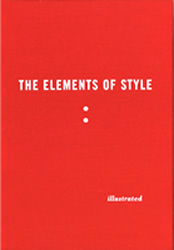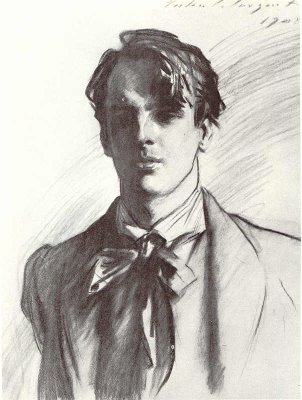Gulags on Ellis IslandA dissonant note of moral equivalence at an exhibit on communist horrors. BY BRIAN M. CARNEY
ELLIS ISLAND, N.Y.--Tucked out of the way on the top floor of the main building here is a curious little traveling exhibit about the Soviet Gulag. On the day that I visited, no signs in the lobby of the Ellis Island Museum announced the presence of the exhibit; one happened upon it through determination or by chance, stepping with little warning from display cases devoted to the hopes of immigrants seeking freedom or opportunity in America into the hopeless deprivation and cruelty of Siberian death camps.
The Gulag exhibition is on display at the museum through July 4, after which it will travel around the country over the next two years--to Boston; Independence, Calif.; Atlanta; and Washington. The show's title, "GULAG: Soviet Forced Labor Camps and the Struggle for Freedom," offers some hint as to why the exhibit is being housed here during its New York stop; Ellis Island is, in its own way, about the struggle for freedom. And it sits, of course, in the shadow of the Statue of Liberty.
In this setting, the exhibit's collection of artifacts from Gulag camps--supplemented by a brief history, Soviet propaganda newsreels and short biographies of notable dissidents who were exiled to the Gulag at one time or another--takes on an affecting, mesmerizing quality. The space it occupies could be tramped through in the blink of an eye. But one is invited to linger, not least by the secluded feeling up in the attic, away from the bustling main reception hall, and the sense of discovery that comes from having found the exhibit at all. Moreover, the small artifacts with which the story of the Soviet Union's system of forced-labor camps is told are strikingly effective. One display explains that spoons, cups and bowls were in such short supply that the crude and makeshift examples here on display --made from castoff tin cans and bits of scrap metal--were highly prized.
Another explains that the Belomorkanal--a slave-labor-intensive project that was hailed as a great early success of Stalinism--was not only built by terrorized prisoners but proved useless in practice. It is only after this that one is shown the silent newsreels of the allegedly happy socialist workers building the canal, intended to connect the White Sea with the Baltic, while Stalin looks on approvingly. Experienced in this way, the cheerful-seeming newsreel shot takes on a captivating, horrifying double meaning. From the explanatory panels elsewhere in the exhibit, a visitor now knows, watching the grainy footage, that prisoners who grew too weak to move their quota of dirt in this and other projects were routinely killed or left to die; the socialist system had no resources to waste on those who could not contribute their share.
There are also full-scale mockups of a Gulag prison cell and prisoners' firsthand accounts of their degrading treatment at the hands of both guards and fellow prisoners--common criminals were sent to the Gulag along with political dissidents, and the former were often employed by the prison guards as oppressors and tormentors of the latter. As for what constitutes a political crime, we learn of a man sent into exile for scrawling an ironic remark on an allegedly secret ballot (which had, in any case, only one candidate listed). Others, we are told, might receive three years of forced labor for being thrice late to work; indolence was a crime against the people.
But then, abruptly, the spell is broken, and in a dispiriting if not alarming way. "Brutal systems have played a prominent role in many countries, including the United States," one of the exhibit's last panels tells visitors. By itself, that one clause--"including the United States"--would be bad enough. But the panel continues. "Although slavery ended after the American Civil War, its consequences persist. The repercussions of the Holocaust in Europe and apartheid in South Africa reverberate even today. Similarly, Russians face the legacy of the gulag. How can citizens in these countries face up to the horrors of the past?"
Just as it is the small details of the Gulag exhibit that lead one to consider the depth of the deprivation its captives endured, it is the word "similarly" that so effectively undermines what has just been shown. After all, if the Gulag is "similar" to anything in American life or history, does it teach us anything about the Soviet Union--or about anything at all?
"If you cannot distinguish between levels of evil, you are a cause of evil." Such was the astute reaction of a man whose father spent a decade in the Gulag, when confronted with this moral equivalence in the paragraph above.
It is certainly true that learning about evils perpetrated in other times in other countries can too easily lead to a comfortable sense of moral superiority. That can, in its own way, undo what might otherwise be a teaching moment. All the same, however, things are not all the same. If the Gulag is interesting only as a means of turning a mirror on the injustices of our own penal system, it is arguably not interesting at all. The Gulag was, and is, a reductio ad absurdum of sorts of the Soviet system itself. It was where "counterrevolutionary" elements were sent to learn the virtues of work and of collectivism, but the lesson was predominantly that of man's inhumanity to man. All prisoners were slowly starved to death, and those too weak to work were starved faster than the strongest. Thus the weak grew weaker and the strong stronger. The overwhelming impression at the heart of the Gulag exhibit is just this--that cruel and arbitrary power lay at the heart of a system that purported to redress inequalities but instead etched them in stone.
The Soviet Union tried throughout most of its existence to forcibly prevent its citizens from seeking freedom in the West. The rest of Ellis Island tells a very different story about a quite different country and system. It's the story of a country that, for centuries, people have risked their lives to reach. No moral equivalence there.
Mr. Carney is a member of
The Wall Street Journal editorial board.
The article can be read here.





